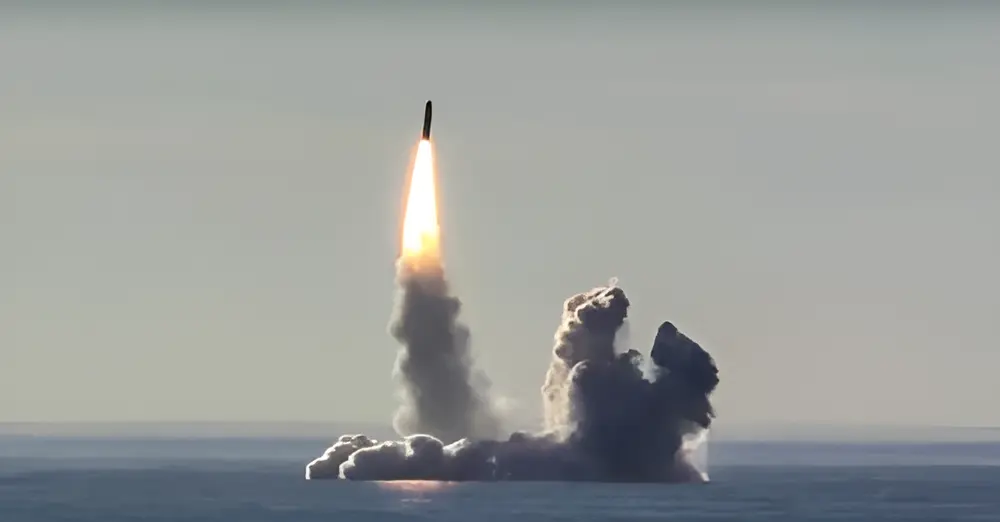
India’s K-6 hypersonic missile is set to revolutionize naval warfare. With Mach 7.5 speed, 8,000 km range, and MIRV capability
1. The Rise of K-6: India’s Answer to Global Naval Power
In a bold leap toward maritime supremacy, India is developing the K-6 hypersonic submarine-launched ballistic missile (SLBM), a next-generation weapon that could redefine the balance of power in the Indo-Pacific. Built by the DRDO’s Advanced Naval Systems Laboratory in Hyderabad, the K-6 is designed to be deployed from India’s upcoming S-5 class nuclear-powered submarines, which are larger and more advanced than the current Arihant-class fleet.
What sets the K-6 apart is its hypersonic velocity of Mach 7.5 (approximately 9,261 km/h), making it nearly impossible to intercept with existing missile defense systems. With a range of up to 8,000 kilometers, the missile can strike deep into enemy territory while being launched from the relative safety of the Indian Ocean.
This development places India in an elite club of nations, alongside the U.S., Russia, China, France, and the U.K.—that possess long-range, submarine-launched hypersonic capabilities. It also marks a significant evolution from India’s earlier K-series missiles, such as the K-4 and K-5, which had ranges of 3,500 km and 6,000 km respectively.
2. Stealth, Speed, and Strategic Superiority
The K-6 is not just fast—it’s stealthy, survivable, and devastatingly precise. Its Multiple Independently Targetable Reentry Vehicle (MIRV) capability allows it to carry multiple warheads, each aimed at a different target. This means a single K-6 launch could neutralize several high-value enemy assets in one strike.
Physically, the missile is a behemoth, over 12 meters long and 2 meters wide, with a payload capacity of 2–3 tonnes. It’s a three-stage, solid-fuel missile, optimized for deep-sea launches from the S-5 submarines, which are currently under construction.
The strategic implications are profound. With the K-6, India can maintain a credible second-strike capability, a cornerstone of nuclear deterrence. In the event of a first strike by an adversary, India’s submerged S-5 submarines armed with K-6 missiles could retaliate with overwhelming force, ensuring mutual destruction and thus, deterrence.
Moreover, the missile’s stealthy underwater launch profile makes it extremely difficult to detect, giving India a significant edge in asymmetric naval warfare. In a crisis scenario, cities like Karachi or strategic installations along China’s eastern seaboard could be within striking distance.
3. A Strategic Leap Amid Rising Regional Tensions
The timing of the K-6’s development is no coincidence. With China expanding its naval footprint in the Indian Ocean and Pakistan modernizing its missile arsenal, India’s need for a robust underwater deterrent has never been more urgent. The K-6, paired with the Agni-5 ICBM, forms a formidable two-pronged ballistic missile shield, one land-based, the other sea-based.
India’s broader defense modernization includes new aircraft carriers, stealth frigates, and fifth-generation fighter jets. But the K-6 stands out as a symbol of technological ambition and strategic foresight. It reflects India’s shift from reactive defense to proactive deterrence.
While the missile is still undergoing development and trials, its very existence sends a powerful message: India is ready to defend its interests, above, on, and beneath the seas.
Conclusion:
The K-6 hypersonic missile is more than a weapon, it’s a strategic game-changer. With unmatched speed, stealth, and strike capability, it elevates India’s naval deterrence to a global standard. As the world watches the Indo-Pacific with growing concern, the K-6 ensures that India’s voice will not only be heard but respected.
Stay updated with the latest news on Rapido Updates. Keep yourself updated with The World, India News, Entertainment, Market, Automobile, Gadgets, Sports, and many more
1 thought on “K-6 Hypersonic Breakthrough: India’s Underwater Superweapon Redefines Naval Dominance”